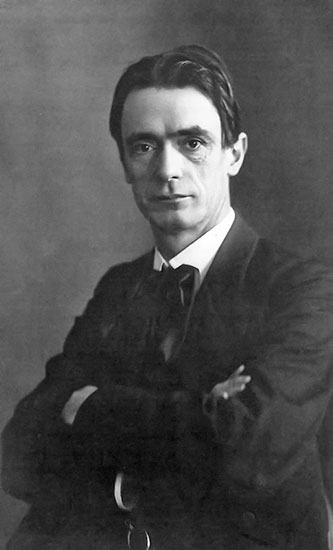
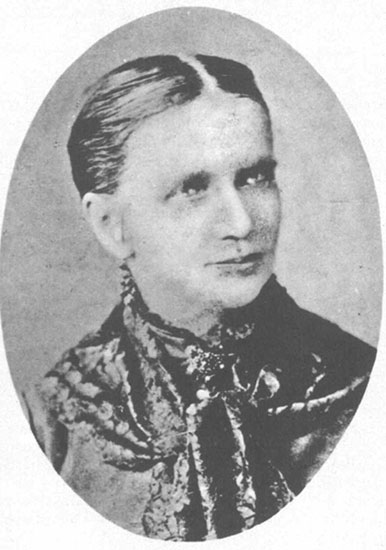
|
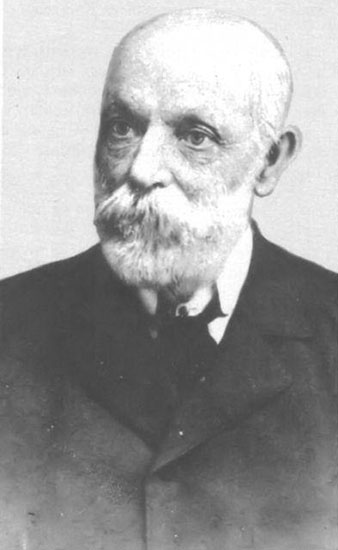
|
Rudolf Steiner was born February 27, 1861 in Krajelvek, on the border of Hungary and Austria, in the Austro – Hungarian Empire, between Western and Eastern Europe – today Croatia
Father: Johan Steiner (1829 – 1910)
Mother:Francizca (Blie) Steiner (1834 – 1918)
Both from Lower Austria
When he was born he had a serious health problem.
He was baptized two days after he was born at Drascovek Church, significantly dedicated to Michael, with the name Rudolf Lawrence Joseph Steiner.
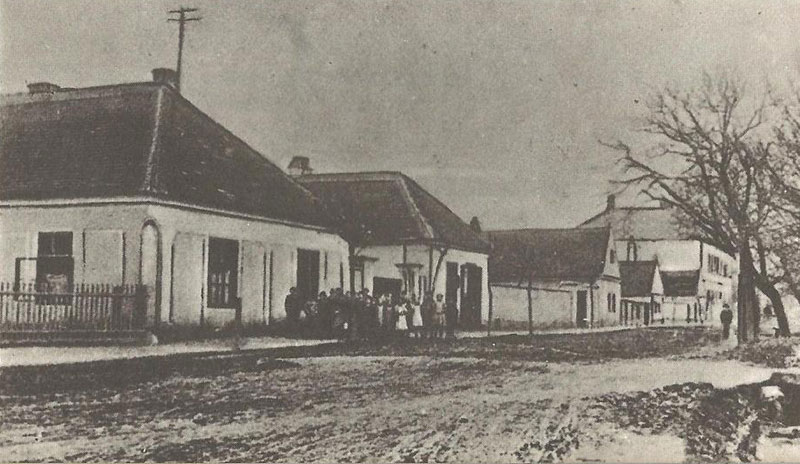
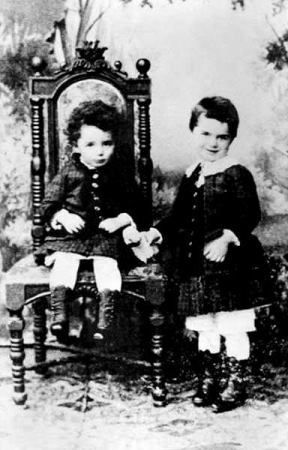
First of 3 children, he had a sister Leopoldina (1863) and a brother Gustav (1866).
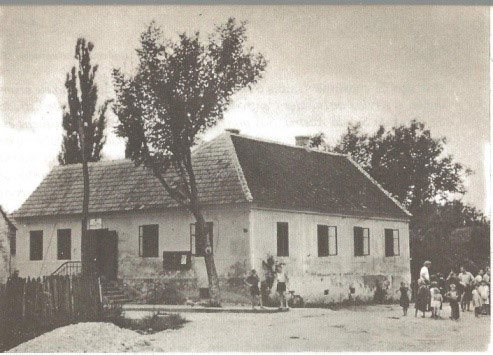
Father is transferred to Möbling near Vienna on the Semmering Railway.
1863 – 2 years
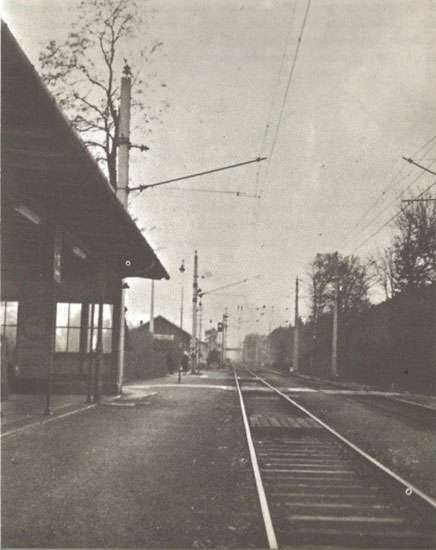
Father is transferred to Pottschach, Semmering railway technologically advanced for the time. The father works as a telegraph operator on a wireless telegraph, a technical miracle for that time.
A wonderful landscape surrounded his childhood, the woods and the majesty of the mountains reflected the sun. He was enchanted with nature.
Also very important were the games with his sister and a book with moving figures that they spent hours leafing through. So he learned his first letters.
All the state – of – the – art technological apparatus of the station where your father worked, he was very interested.
1867 – 6 years
School was very important to him, but after a disagreement with the master, his father takes him out of school. Since then, his father has been in charge of his teaching.
Father Valentim, a parish priest friend of the family loved to tell stories and jokes about the Catholic Church.
1968 – 7 years
First spiritual experience at a railway station. An aunt who had committed suicide that day, asks him for help. This was clairvoyantly experienced in his soul.
Second Seventh
1869 – 8 years
The school in Neudörf – His family moves to Neudörf on the border with Austria, a small Hungarian village 1 km away on foot from Wiener – Neusdadt, an industrial center. On walks through the Serra da Rosália he picked strawberries, raspberries and blackberries and ferruginous and carbonated water for his family. Contact with simple people from the region with whom I had long chats. Start your school life. Frequent encounters with Redemptorist monks.
1870 – 9 years old
Professor Heinrich Gangl lends him a book on Geometry. This made it possible to contemplate interior forms without sense impressions. He says that this gave him happiness for the first time. The teacher provided an artistic experience with drawing and music on his violin and piano.
1871 – 10 years
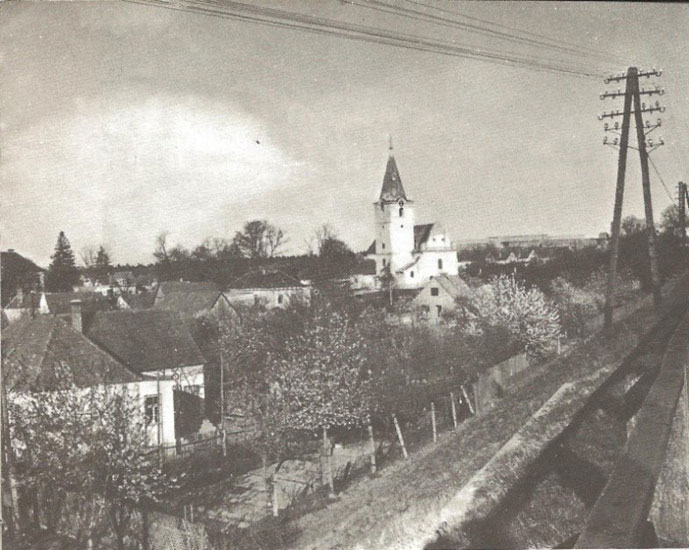
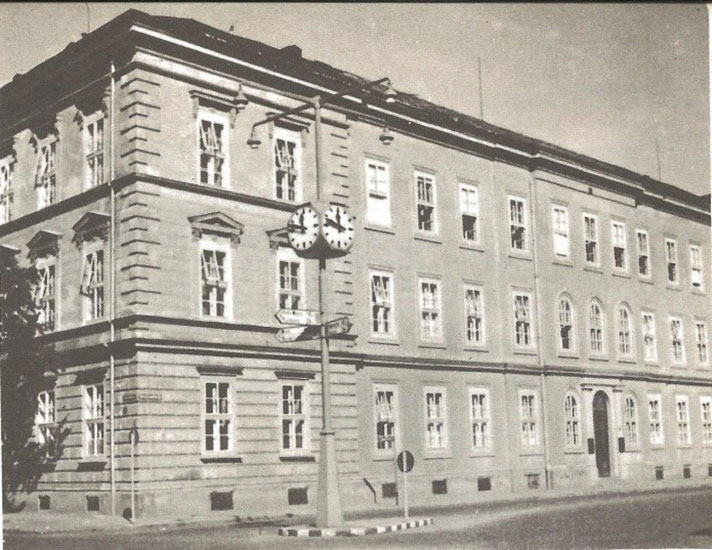
Religious experience as an altar boy in the church where he was very close to Father Frannz Maraz. He felt like a stranger in the house of his parents who were not religiously inclined. Father Franz Maraz tells him about the Heliocentric System of Copernicus, which leaves Steiner quite astonished. Steiner says he was the most significant person in her childhood.
1872 – 11 years old –
His father wants him to pursue a career as an engineer. Approved for the Royal College of Wiener – Neustadt. "I crossed the border between Austria and Hungary in a 30 – minute walk even in winter with deep snow". He said he had many opportunities to strengthen his health. Attended this school from 11 to 18 years old
1873 – 12 years old – I
Yearned to find people to imitate. Acquires knowledge of Descriptive Geometry. In the first two years (ages 11 and 12) he was not a good
student. From 12 to 14 years old, he was self – taught in Mathematics.
Director of the Heinrich Schramm school publishes the book "The force of attraction as an effect of movement". Also read the book by the same author "The general motion of matter as the basic cause of all phenomena in nature". He studied Physics and Mathematics to understand these two books.
1874 – 13 years
Establishes a wonderful relationship with Professor Laurens Jelinek who fulfilled the ideal placed before his soul. His class had extraordinary discipline and transparency. He was a professor of Arithmetic, Geometry and Physics and accompanied him to the Bachelor's degree.
Gets a grade above school concepts in Descriptive Geometry and Design.
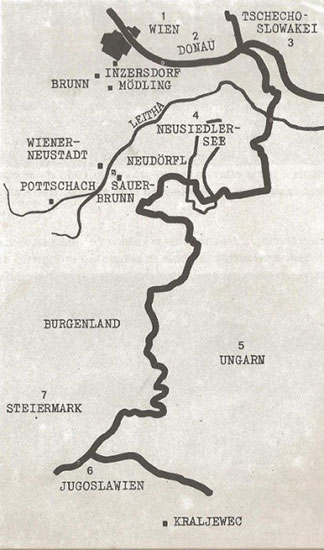
3rd Sep
1875 – 14 years
Philosophical and self – taught studies. He sought an adequate experience of the spiritual world through the soul capable of approaching the essence of the phenomena of nature. He finds in the class teacher who fulfills the ideal that was before his soul. From a mediocre student with great difficulties, he becomes a brilliant student. He is indicated by his teachers to help disabled colleagues as a private teacher giving him a way to guarantee his livelihood.
Reading Kant's book "Critique of Pure Reason". In his adolescent way, he yearned to understand the capacity of human reason to have a real discernment of the essence of things. In History class I read the book by Kant that I had stuck in the textbook.
1876 – 15 years old –
Takes charge of food shopping at home during free school time.
He meets the doctor from Wiener again – Neusttadt, who has opened his vast library to him. There he knows Lübsen's Mathematics books for autodidacts that helped him to assimilate Analytical Geometry, Trigonometry, Integral and Differential Calculus before learning them at school.
Chemistry teacher, who according to him was an extraordinary man, taught only through experiences. Starts teaching his colleagues.
Complements the lack of humanistic studies with self – taught studies.
A railroad employee would bring scientific books and discuss their contents with him. He watched his father's discussions with this official about politics to seek answers such as demonstrating that the spirit that operated in the human person was real.
1877 – 16 years old
Reading Kant's book "Critique of Pure Reason". In his adolescent way, he yearned to understand the capacity of human reason to have a real discernment of the essence of things. In History class I read the book by Kant that I had stuck in the textbook.
First interior exercise: on vacation, I looked for a quiet place to sit in silence and organize in my consciousness how to form a mental representation of the phenomena of nature from simple and clear concepts.
Another exercise was to internalize History after reading Rostek's World History book
1878 – 17 years
It comes to a dispute over the concept of psychological freedom with the professor of German and literature who was guided by the philosophy of Herbart.
The history teacher captivates him for being, according to him, a personality who acted from the fullness, completely enthusiastic in his teaching of history and who acted from the present. 1879 – 18 years old

Graduates from the Lyceum with distinction.
In the oral exam for completion of school, he explains how the telephone works through physics
Moves to Inzendörf with his family to study at the Technical Academy in Vienna and his goal was to be a high school teacher.
Decides to be a Mathematics and Descriptive Geometry teacher but gives up because he doesn't have time to work in his spare time.
Enrolls in Natural History and Chemistry and attends classes in Medicine, Pedagogy, Art and Philosophy.
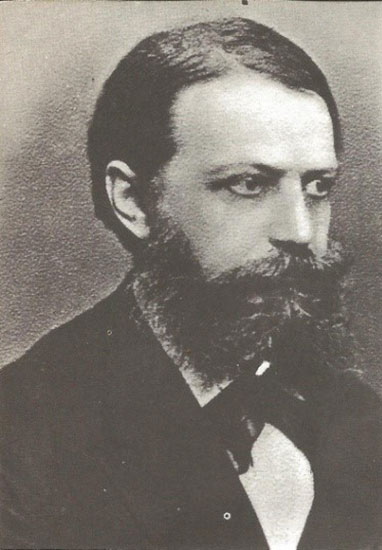

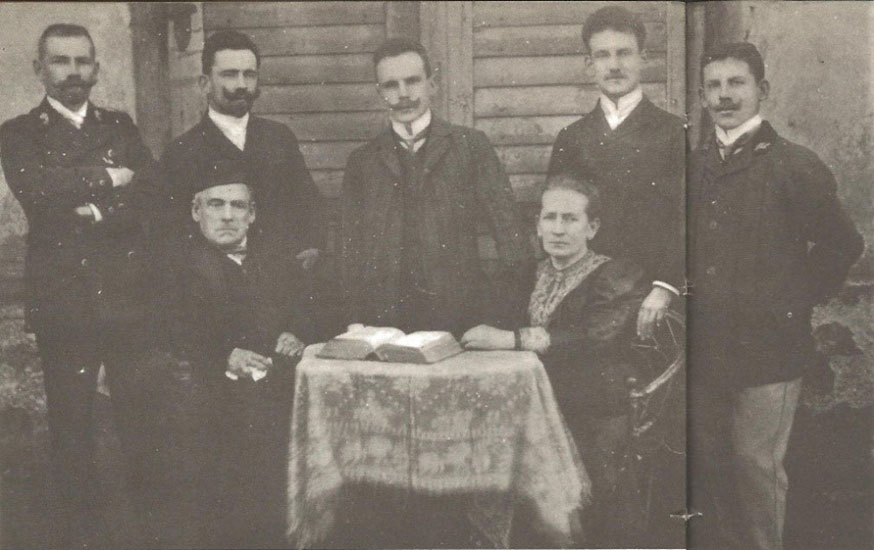
He meets Karl Julius Schröer, Professor of German Literature, who introduces him to the study of Goethe's works.
Reads several authors of German idealism such as Hegel, Nietzsche, Scheling and Fichte.
Writes a manuscript of his interpretation of Fichte's work "Theory and Science – Emphasis on the Role of the Human Self".
From 18 to 21 years old develops Anthroposophical Spiritual Science.
In the double current of time, he finds the root of the knowledge of the totality of his entire work.
1880 – 19 years
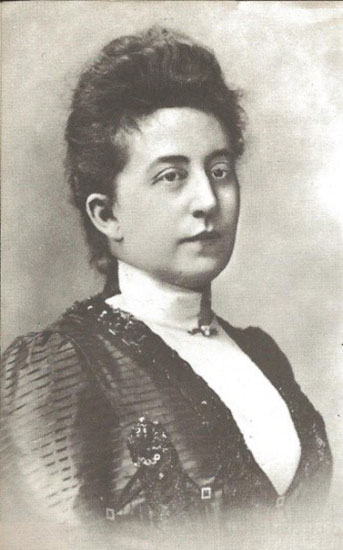
He meets Felix Koguski, an herb gatherer, with whom he exchanges ideas about the spiritual world and Steiner says that he was gifted with a totally elemental and creative wisdom. With the herb gatherer he finds a spiritual relative and doesn't feel so alone. Through Félix Koguski he comes into contact with a very high spiritual master who does his initiation. The master showed him the connection between the sciences and occult science, religions and spiritual forces that weave the threads of history. Through Fichte, the master led him to such a strengthening of his thoughts that he led to a decisive awakening of the soul. From this meeting would be born the germs of his book: Ciência Oculta. His main guideline was: "You can only defeat the dragon if you put on its skin (Michaelic Impulse).
1881 – 20 years
Know the poet Marie Eugenie della Grazie, who, according to Robert Zimmermam, was the only genius he encountered in his life. He began to frequent his house, where artists and intellectuals of the time gathered and discussed the cosmovision of Dostoiesvsky and Shakespeare, who according to Steiner had a pessimistic tone and opposed Goethe.
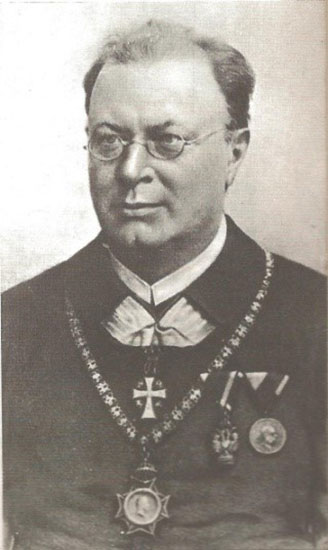
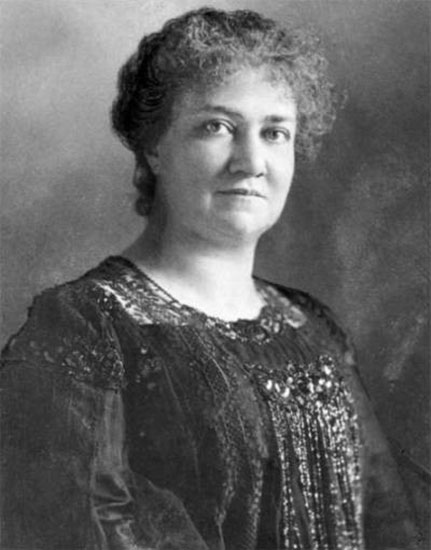
I talked a lot with the Scientist and Friar Wilhelm Neumam of the Cistercians about Christology and transcendental subjects.
Meet Rosa Mayreder, painter and one of the first feminists. She had an expansive, strong, positive creative force. In his yearning for freedom he found in Steiner a congenital soul. They understood each other in the field of social issues and individual morality. Cafe S. Grienstedl in Vienna
He frequented the Café Grienstedeidi and served as his postal address, where political resolutions were taken, poetry and novels were written.
Begins to mature the first ideas for the "Philosophy of Freedom", his doctrine of knowledge.
4th Septenium 1882 – 1889
1882 – 21 years
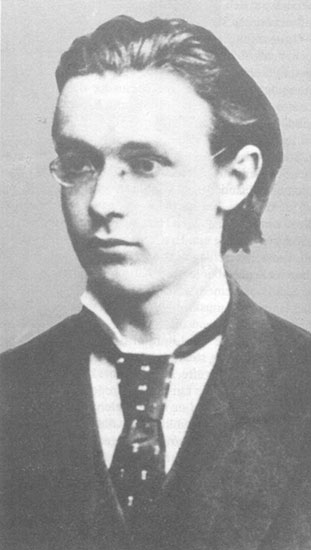
The double stream of time gives him profound conditions to write two articles: "The only possible Critique of Atomistic Concepts" and "The enigmas of the world according to Dubois – Reymond, according to the foundations of physics". The latter was rejected by all the newspapers.
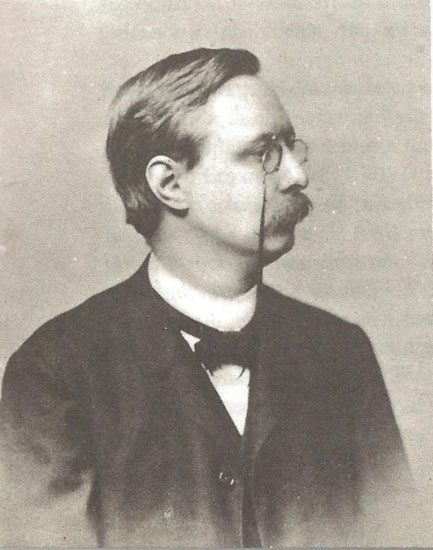
By appointment of Schröer, he is in charge of J. Kürchsner's "Natural Scientific Writings of Goethe in German National Literature". There are 5 volumes of "Goethe's Scientific Thought.
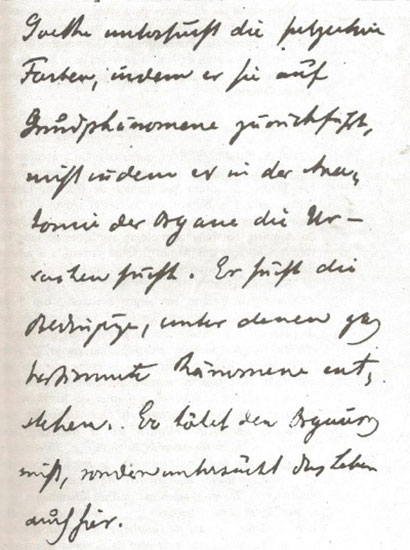
1883 – 22 years – Publishes
the 1st volume of the "Scientific Writings of Goethe, giving him a new understanding of the book's introduction and achieving public recognition with it.
Knows the doctor Joseph Breuer, one of the initiators of Psychoanalysis. Participates in lectures on experiences with hypnosis, treatment of hysteria and therapeutic preparations from cocaine.
Gives his first public lecture on "The principle of humanity in Lessing and its importance for the present".
Writes and publishes with some frequency in several magazines on political – social, educational and pedagogical topics, as well as philosophical issues.
Reads Goethe's "Faust" for the 1st time, stimulated by Schöer.
Librarian and later president of the Library of the German School of the Technical School, engaging, when requesting works, knowledge with many thinkers and writers of the time.
1884 – 23 years
Private teacher of 4 children (preceptor) of the family Ladislau and Pauline Specht. Especially one who was hydrocephalus and could barely read. He managed to help him to the point where he finished his studies, graduated in Medicine, having died in the 2nd World War. Therein lies the germ of what would be the understanding of the Trimembrane of the Human Organism, Walforf Pedagogy and Curative Pedagogy. He stayed in this family for 5 years, from 1894 to 1899. There he says that was when he learned to play.
At this time I was very interested in politics and art.
Attended cafes where philosophical topics were discussed.
Get in touch with the philosopher Franz Bretano.
I was in search of truth through philosophy.
1885 – 24 years
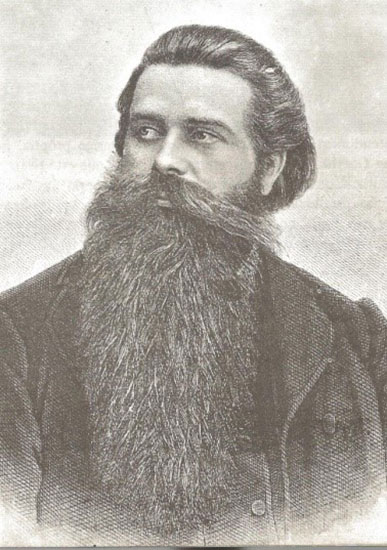
Intensifies philosophical studies and maintains intense correspondence with numerous philosophers of the time such as Eduard Von Hartman and others.
1886 – 25 years
Publication of "Göethe's Cognitive Method"
Editor of the German Magazine.
1887 – 26 years old
Rudolf Steiner becomes seriously ill and needs several weeks to heal, being cared for by Mrs Pauline Specht.
Edouard Von Hartman expresses admiration for the Theory of Knowledge and values Steiner's efforts
1888 – 27 years
Editor of the German Weekly representing the spiritual liberalism of German ideas in Austria.
Conference at the Goethe Association "Goethe as the inaugurator of a new aesthetic".
Read the works of Marx and Engels.
He frequents a circle of poets and artists in a warm atmosphere at the home of an Anglican pastor Alfred Formey.
A very active social life, he frequents the most varied groups of people and his meeting place was the famous Café Griensteidt.
Meeting with a theosophist Friedrich Eckstein, in the aforementioned Café.
5th Sep – ennium – 1889 to 1895
1889 – 28 years
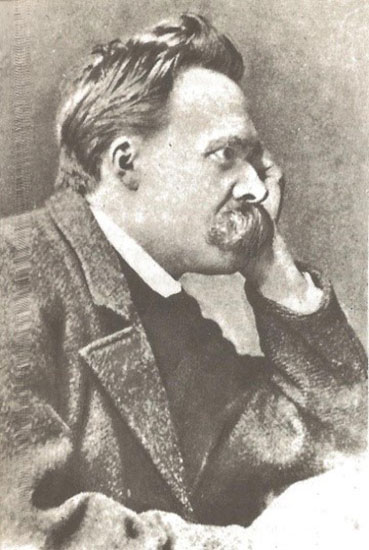
Contact with Nietzsche's works.
Read for the first time Goethe's short story "The Green Serpent and the Beautiful Lily that later influenced the creation of the "Mystery Dramas".
Large trips (Budapest, Weimar, Eisenach, Berlin, Stuttgart, and Munich).

Schröer appoints Steiner to work at the Goethe – Schiller Archive in Weimar, Germany, the institute that contained all of Goethe's work. He was responsible for editing Goethe's natural – scientific works.
First visit to Germany.
First contact with Viennese Theosophists at Marie Lang's house. Contact with two theosophical works: "Esoteric Buddhism" by Sinett and "Light on the Way" by Mabel Collins
1890 – 29 years – Takes
Contact with the works of Ernest Haeckel and Nietzsche.
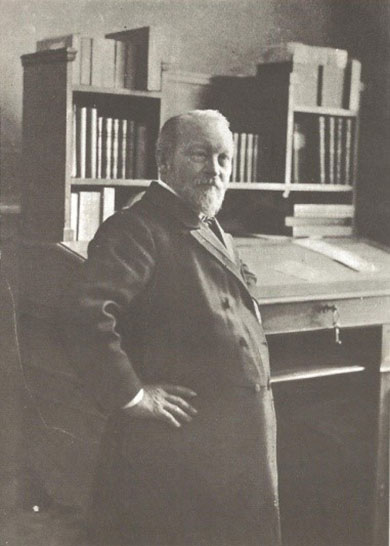
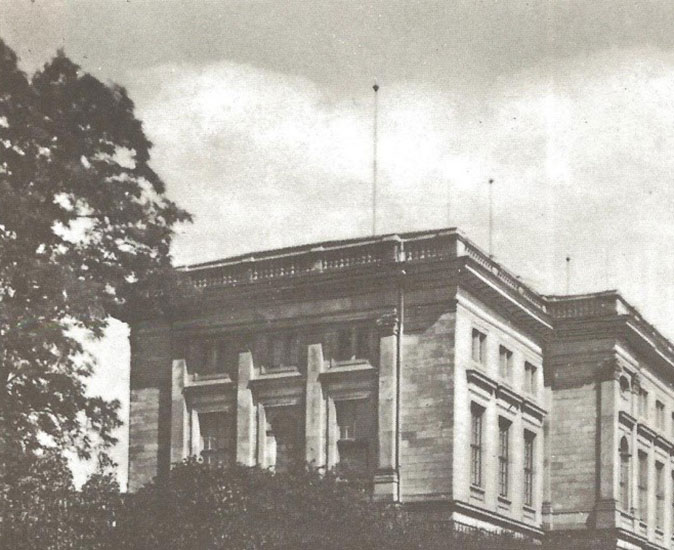
Moves to Weimar and goes to work on the Goethe – Schiller archives.
1891 – 30 years –
Sketch for the foundations of Anthroposophy with contact with the works of Goethe.
Edition of Goethe's Morphological and Scientific Works.
He gives his first anthroposophical lecture "The Occult Manifestation of Goethe".
Sick of Aphonia with complete paralysis of the vocal cords and is treated with electricity, the universal agent of the modern era.
Tries to apply as a professor at the University of Jena, but to no avail.
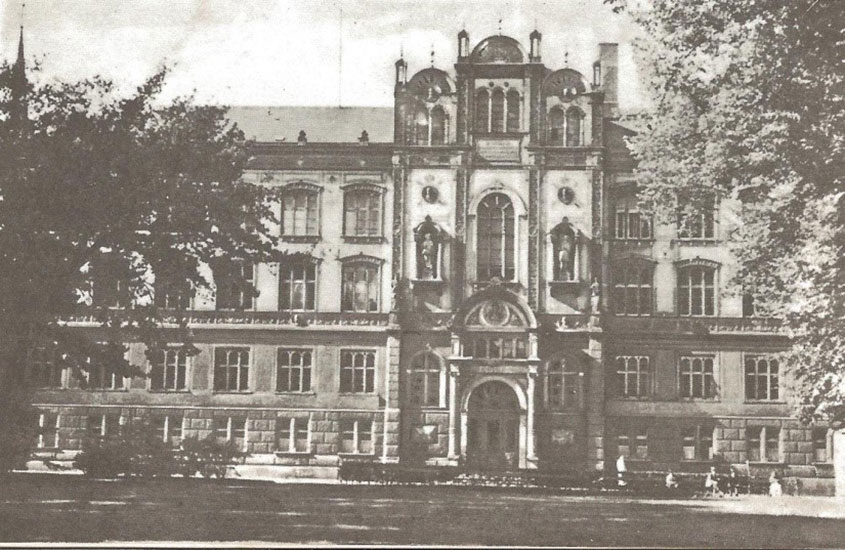
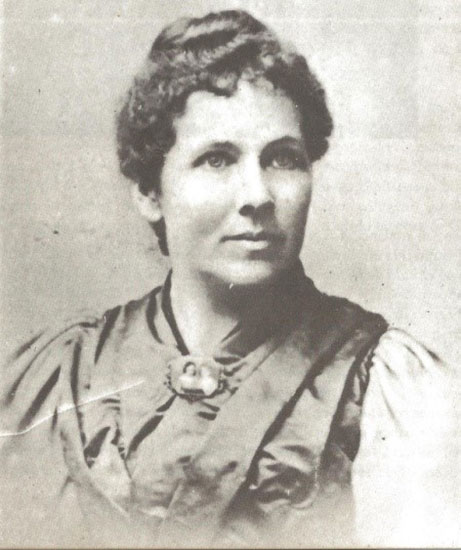
Receives the title of Doctor by the University of Rostok.
1892 – 31 years
In Weimar Steiner meets Anna Eunicke and moves in with her, gradually taking over the education of 5 teenagers.
He publishes the "Philosophy of Liberty" his main work.
An intensive work of Schopenhauer's works begins.
Actively participates in the election process for Parliament in Germany.
Otto Specht, his hydrocephalus student, successfully completes high school and prepares to enter the Faculty of Medicine.
1892 – 32 years
Publishes his book Verdade e Ciência.
Receives the Gold Medal from the Grand Duke of Weimar.
1894 – 33 years
Publishes the "Philosophy of Liberty".
According to Collin Wilson, a non – anthroposophical biographer, his contemporaries did not understand the breadth and generality of his works.
Intense studies of Nietzsche's philosophical work.
He publishes the work "Nietsche – A fighter of his time" in defense of the philosopher.
Receives very positive responses from Rosa Mayreder and Pauline Specht to the book "Philosophy of Liberty"
1895 – 34 years
Visit to Nietzsche already sick.
Publication by Friedrich Nietzsche – A fighter against his time.
6th Sep – ennium – 1896 to 1902
1896 – 35 years
Finishes work on the Goethe – Schiller Archive.
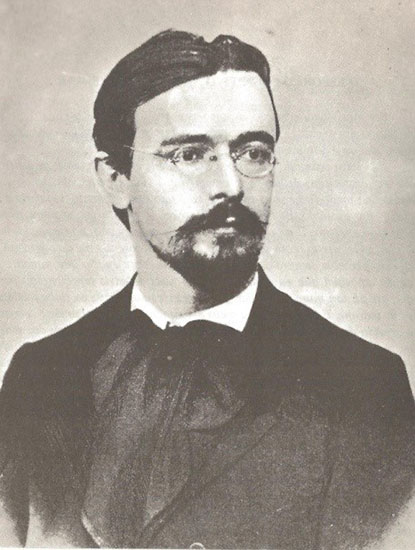
1897 – 36 years old
Moves to Berlin.
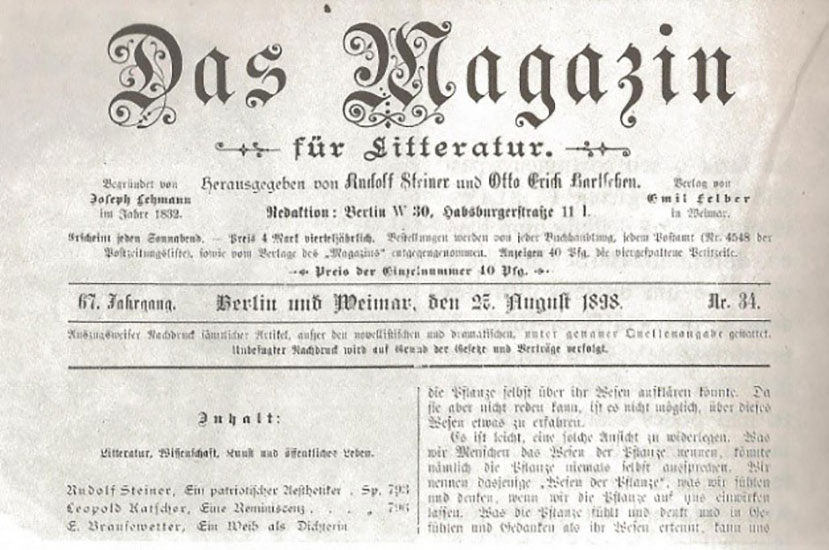
Beginning of work at Revista de Literatura with Otto Erich Hartleben, where he is frontally against anti – Semitism, and at Folha Teatral.
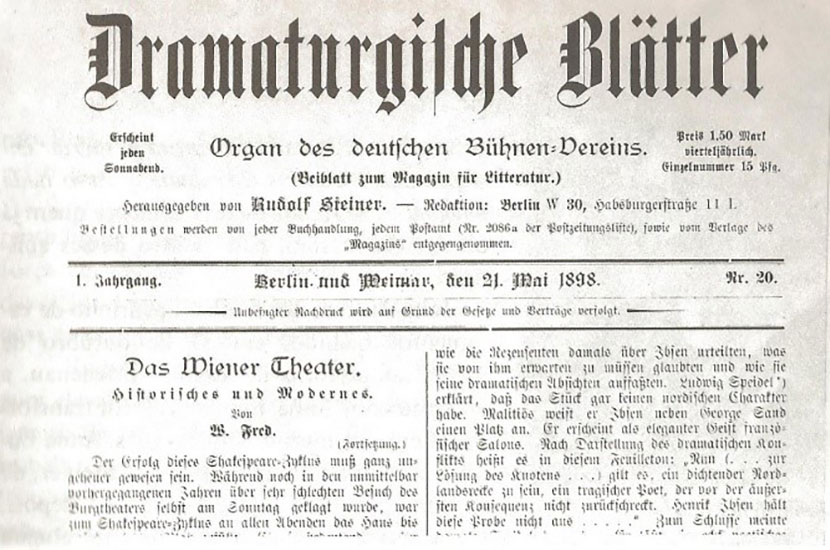
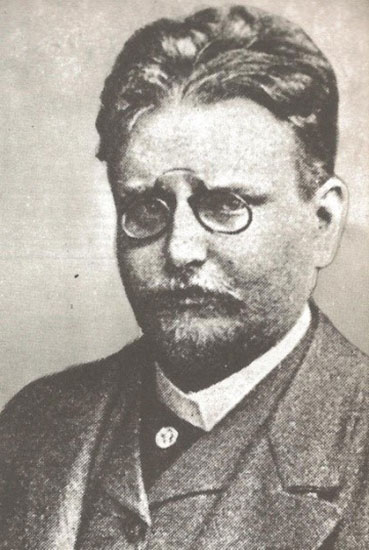
Activity in the Free Theater Society.
Activity in the Giordano Bruno League.
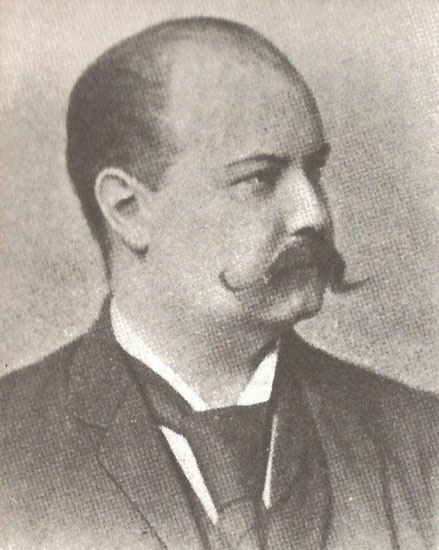
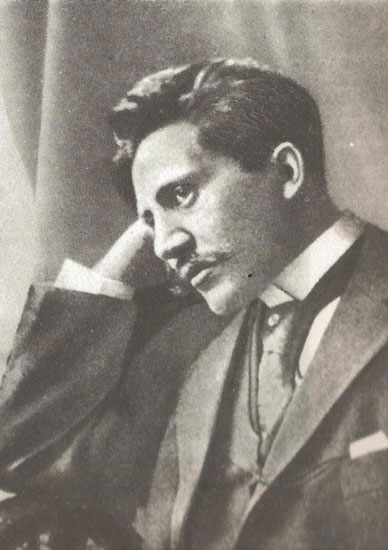
Friendship with John Mackay and Ludwig Jacobowski.
Publication of "The Worldview of Goethe".
1898 – 37 years.
Encounter with adverse forces. "My soul was about to be pulled into a kind of abyss" –
Theater performances, artistic performances, debates, etc.
1899 – 38 years
Marriage to Ana Eunicke – Steiner. She offered Steiner an apartment with the understanding that he would help with the education of her five children, which he was glad to do. She was a decade older than Steiner but they developed soon an intimate friendship. "She watched over all his needs in the most devoted fashion", according to Steiner.
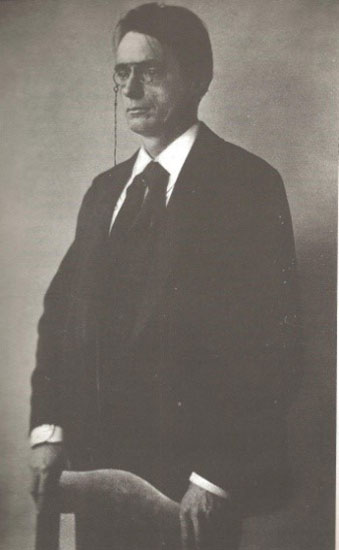
Professor at the School of Workers (Complementary Training School for workers) with a Marxist orientation, where he teaches Natural Sciences and History.
Experience of the Mystery of Golgotha which he considers the central event of his initiation
1900 – 39 years
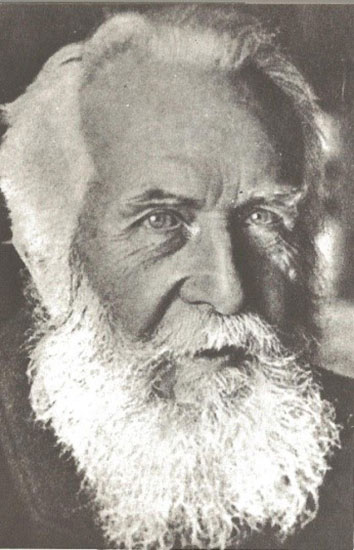
Writes about Haeckel.
Speech to 7000 speakerless typographers to commemorate the 500th anniversary of Gutenberg.
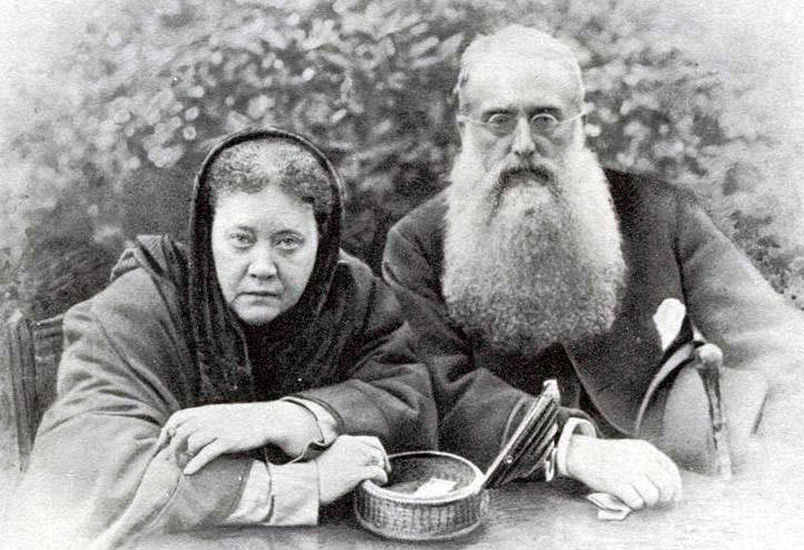
Gives a lecture to a group of Theosophists at the house of Count Brockdorff Routzan "The Secret Manifestations in Goethe".
You meet in this group with Marie Von Silver (Steiner) who asks you about the possibility of establishing a deep spiritual foundation based firmly on Christian – European teachings.
First lectures within the scope of the Theosophical Library in the house of Baron and Baroness Brokdorff: Conceptions of the World and Life in the 19th century, expanded and edited as "Enigmas of Philosophy". It is committed to transmitting only the results of its own supersensitive research.
He also gives in this library a lecture on Nietzsche and then the Secret Manifestations in Göethe.
1901 – 40 years –
Cycle of lectures in the Circle of Komendem (To come) "From Buddha to Christ".
Cycle of lectures "Christianity as a mystical fact" at the Library of the Theosophical Society in Berlin.
1902 – 41 years
Rudolf Steiner and Marie Von Silvers (Steiner) become members of the Theosophical Society in London.
Participation of Rudolf Steiner and Maria Von Sivers in the 13th General Assembly of the European Section of the Theosophical Society in London.
He is sworn in as General Secretary of the Theosophical Society of Germany –
Lecture at the Theosophical Society "An Anthroposophy".
Publication of "Christianity as a mystical fact".
Editor of the Periodical Lucifer with Marie Von Sivers, later known as Lucifer – Gnosis.
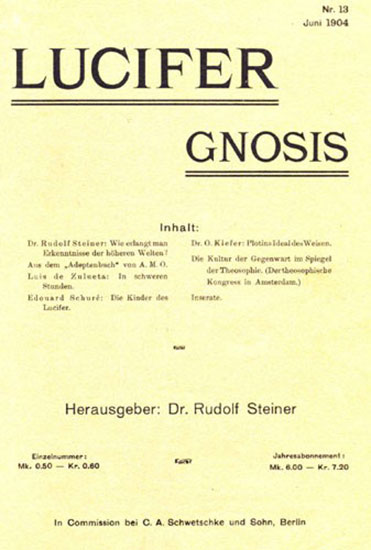
He met Ita Wegman, at the Theosophical Society, with whom he founded Anthroposophical Medicine.
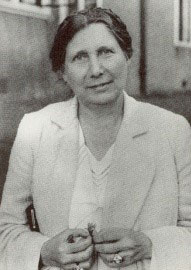
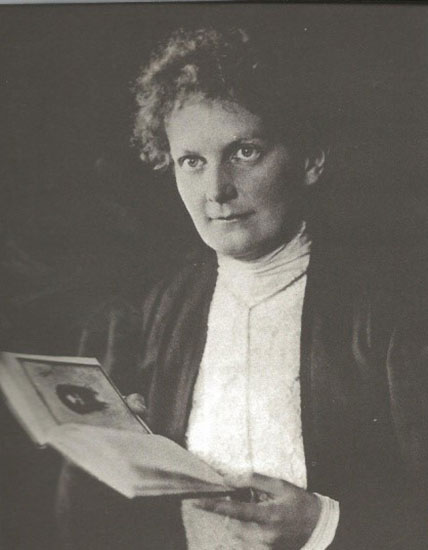
Marie Von Sivers becomes his intense collaborator.
Intense activity as a lecturer in Berlin and throughout Europe, laying the foundations of Anthroposophy.
Coordinates the activities of the Esoteric School of the Theosophical Society giving it Christian directions. Guides individual members through mantras and meditations.
Seventh Seventh Year
1903 – 42 years
Last year he lived with Ana Eunicke. She separated from Steiner two years before her death in 1911.
Publish articles on Karma.
Phase of full activity in the Theosophical Society through cycles of lectures and conferences.
1904 – 43 years – Publishes
the book "Theosophy – Introduction to Supra – sensible Knowledge and the Destiny of the Human Being".
Publishes the book "Initiation or Knowledge of the Superior Worlds".
Participates in the Theosophical Congress in Amsterdam with the lecture "Mathematics and Occultism"
There is an intense activity of the Theosophical Movement with groups (branches) in several cities in Germany and the most important were Stuttgart and Munich.
1905 – 44 years
First writings on the "Social Trimembrane"
Publishes the books "Chronicle of the Akasha", "Degrees of Higher Knowledge".
Stops working at the Workers' Training School.
Gives lectures by the Theosophical Society in Berlin and other German cities on The Gospel of St. John and other topics.
He dedicates this year intensely to giving lectures.
1906 – 45 years
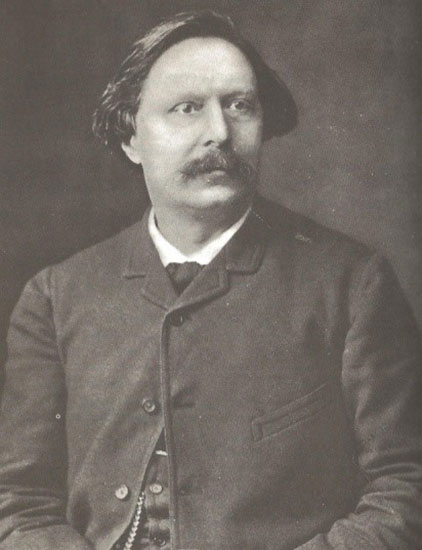
Meeting with French playwright Edouard Shuré, in Paris.
1st Lecture Cycle outside Germany.
1907 – 46 years
Organizes the World Congress of the Theosophical Society in Munich and introduces the first artistic impulse as spiritual revelation, in the decoration of the rooms and in the theatrical presentation.
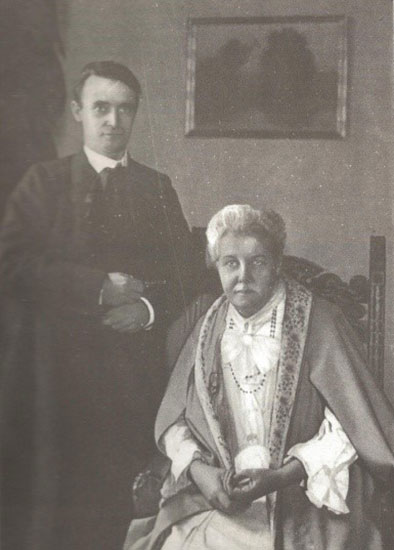
Leaves the Theosophical Society when Anne Besant announces the advent of Christ reincarnated in Krinamurti, a Hindu boy.
Steiner increasingly focuses his entire message on the Mystery of Golgotha as the incarnation and resurrection of the Logos, of the Christ, changing the spiritual condition of the Earth and of all Humanity.
Steiner draws attention in his spiritual writings to Freedom and also to speak only what he had experienced spiritually.
Presentation of the "Drama of Eleusis" by Edouard Schuré directed by Steiner.
Gave 172 lectures.
1908 – 47 years
The Lucifer – Gnosis magazine ceases publication due to absolute lack of time for Steiner to write it.
Marie Von Sivers founds the Philosophical – Theosophical Publishing House which publishes Rudolf Steiner's books and lectures in Berlin.
Last year described by Steiner in his biography "My Life"
Travel to Germany, Holland and Scandinavia.
Provides 207 lectures.
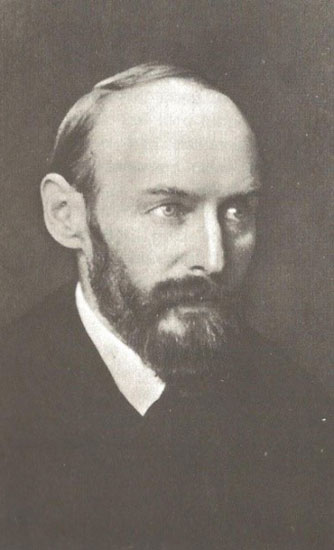
1909 – 48 years
First meeting with Christian Morgenstern in Berlin.
Starts to travel regularly outside Germany, mainly to Scandinavian countries.
Publishes the "Occult Science".
Publishes "The Gospel of Luke" a deepening of Christianity.
Deepening on the Christological theme in his lectures in Rome, Oslo, Budapest and Munich.
At the International Congress in Budapest, the play The Sons of Lucifer by Edouard Shuré, staged by Rudolf Steiner and Maria Von Sivers in the presence of the poet, is presented.
Felix Kogutzki dies.
Oitavo Sepênio
1910 – 49 years old
Moves to Munich, artistic center at the time.
Presentation of the 2nd Mystery Drama "The Portal of Initiation" under the responsibility of Marie Von Silvers.
It points to the appearance of Christ on the etheric plane in 1933.
It emphasizes that the mission of Anthroposophy is to prepare in men the acquisition of spiritual senses.
His father Johan Steiner dies.
Provides 197 lectures.
1911 – 50 years
Anne Eunicke dies.
Presentation of the 2nd Mystery Drama "The Ordeal of the Soul. – Occult
Physiology Course,
Lecture on "Christ in the Etheric" after 12 years of his Christic experience.
Publishes "The Direction of Man and Humanity".
Lecture cycles in Munich, Kassel, Hannover and Basel.
Inaugurated in Stutgart the first building according to Steiner's instructions, the Sala do Ramo.
Progress in Munich, preparations and projects for construction of the central building, called Higher School of Spiritual Science or House of John.
1912 – 51 years
Presentation of the 3rd Mystery Drama "The Guard of the Threshold," in Munich.
Creation of Eurythmy.
Creation of the Art of Speech.
The creation of the Anthroposophical Society begins.
Publication of "A path to the Self – knowledge of the Human Being in 8 meditations".
The construction of the building called Casa de João is postponed. The building permit is denied by the city of Munich.

Publication of the "Calendar of the Soul".
1913 – 52 years old
Foundation of the Anthroposophical Society in the city of Cologne without major formalities.
Breaks with the Theosophical Society definitively.
Publication of "The Threshold of the Spiritual World", on Initiation.
Keystone of the Goetheanum in Dornach on the 20th of September, in Switzerland, a neutral country enabling several enemy nationalities to work together in the outbreak of the 1st World War in 1914.
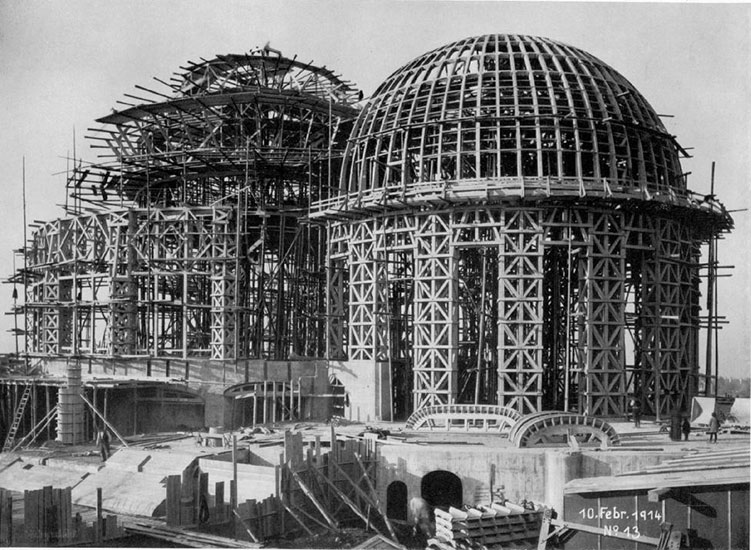
At this time, he makes a constant appeal for humanity to carry and worship at its core, the impulse of Christ.
Speaks, in several conferences, of the Threshold of the Spiritual World.
In Kristiania, Norway the series of lectures "The Fifth Gospel".
Representation of the 4th Mystery Drama "The Awakening of Souls".
Gave 190 lectures.
1914 – 53 years old
Marries Marie Von Sivers, now Marie Steiner.
In the Goetheanum Anthroposophical Architecture is developed.
The Center of Anthroposophical Life moves to Dornach, Switzerland.
The classes of the Esoteric Society are interrupted because according to Steiner there is a lot of disturbance in the Earth's aura due to the great bloodshed.
Publishes "The Enigmas of Philosophy".
World War I begins.
A Community of Anthroposophists begins in Dornach.
Given 148 lectures.
1915 – 54 years
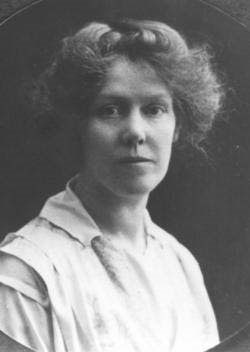
The Representative of Man
The war restricts Steiner's public performance, he travels little.
Steiner works with Edith Marion on the models of the Group (The Representative of Humanity).
The subject of his lectures is Karma, Life after Death, and Reincarnation.
Verbal Eurythmy Course.
Directs the staging of "Faust" (only a few chapters).
Completion of the construction of the Goetheanum.
1916 – 55 years
Interior of the First Goetheanum
Writes "The Enigmas of Man".
Steiner suffers a serious accident, falls off a scaffold and is almost pierced by a wooden spike in his chest. Edith Marion manages to dodge him at the last moment.
Ninth September 1917 to 1924
1917 – 56 years
According to Hemlebem, the 3rd phase of Anthroposophy begins, which runs from 1917 to 1923.
The Social Trimembrance Movement begins.
Speaks of the Trimembrane of the Human Organism in the book "The enigmas of the soul".
In the Gotheanum the artistic works are actively proceeding: Eurythmy, The Group's Work, Painting of the Domes of the building.
1918 – 57 years
Elaborates and re – edits all the old books.
No new books are published.
Publication of "Goethe's spirituality in its manifestation in Faust" and in his short story "The green snake and the beautiful Lily".
His mother Franzisca Steiner dies.
Suffers aggression from the Nazis.
Visit a huge number of cities.
1919 – 58 years
Foundation of the 1st Waldorf School through Emil Molt, owner of the Waldorf – Astória Cigar Factory.
Intense activity promoting the Social Trimenbration.
Publication of "The Central Points of the Social Question".
Gives up continuing to publicize the Social Trim because it does not have the expected results.
Eurythmy is brought to the public for the first time after 7 years on a tour of Germany and Switzerland.
1920 – 59 years
First course for doctors (Spiritual Science and Medicine), beginning what would become Anthroposophical Medicine, with the important participation of Ita Wegman.
Prepared the foundations for the operation of two commercial and social institutions Die Komendem Tag and Futurum AG.
He is attacked intensely by churches and Nazis, which demands a lot of his time in defending himself.
In the Goetheanum first higher course of Anthroposophy.
Expands Waldorf Pedagogy.
He delivered 373 lectures.
1921 – 60 years
Foundation of the 1st Anthroposophical Clinic in Alesheim, Switzerland by Ita Wegman, today Ita Wegman Klinik.
Anthroposophical Congress in Stuttgart and other German cities.
Foundation of a journal Das Goetheanum with regular contributions from Steiner.
Provided 684 Lectures.
1922 – 61 years
Year of the Great Crisis.
Suffers death attempts by young Nazis in two conferences.
Ruins of the Goetheanum.
Fire of the Goetheanum.
Withdraws from most of his activities, for not finding firm support from the Anthroposophical Society.
Liquidation of Futurum AG.
Die Komenden Tag (The Comenden Day) greatly slows down your activities.
Difficulties in Waldorf schools.
Friedriech Rittelmeyer (1872 – 1938)
Foundation of the Christian Community presided over by Rittelmeyer, a well – respected German Protestant pastor.
Highlight of activities, courses, conferences and lectures in Germany and Austria, with a Congress in Vienna.
Three trips to England and two to Holland.
Course of Curative Eurythmy.
1923 – 62 years
He sought to activate the Anthroposophical Society, realized that the destruction of the Goetheanum was linked to the crisis in it.
Foundation of Regional Societies in several countries.
Christmas Congress when he delivers the Meditation on the Foundation Stone as an interior landmark for every anthroposophist.
Ita Wegman asks the question about the Renewal of the Mysteries.
Refoundation of the General Anthroposophical Society with Steiner as President.
Foundation of the Free Higher School of Spiritual Science, also having him as President.
He started the manuscript "My Life" which is edited weekly in Das Goetheanum.
The fire of the Goetheanum leaves him broken, although he remains very active due to the intense force of Querer.
Beginning of the elaboration and confection of the Project of the Second Goetheanum, that would be built after his death, of apparent cement. According to Goetheanum –
Gave 425 lectures
Ninth September
1924 – 63 years –
Superhuman activity of courses and conferences, enough to give 5 classes of different courses for different groups in one day, in addition to travel, negotiations, meetings and advice.
Central point of his lectures is Human Destiny (Karma).
Publishes with Ita Wegman "Fundamental Elements for the expansion of the Art of Healing according to spiritual scientific knowledge". The only work by Steiner made in collaboration with another author.
Intensifies internal courses
1 – Foundation of the Biodynamic Agriculture Movement in Koberwits.
2 – Creation of the Curative Pedagogy Movement.
3 – Training Course in Waldorf Pedagogy
4 – Training Course in Eurythmy.
5 – Diction and Theater Course.
6 – Course for Pastors of the Christian Community.
7 – Lectures in several cities: Stuttgart, Prague, Paris, Breslau, Arnheim, London and some cities in Turkey.
Onset of fatal disease.
Last lecture for members of the Anthroposophical Society on September 28 (Last Address).
He is cared for by doctors Ita Wegman and Ludwig Noll.
Suffered from an intense exhaustion, he was forced to stay in bed. He writes in bed "Letters to the members" and "The Mystery of Michael" is published.
His bed was at the foot of the statue of the Representative of Humanity.
Continues to write his autobiography until age 46.
1925 – 64 years
Publication of the book on Medicine with Ita Wegman.
Death on March 30th.
Dies fully conscious of the material and spiritual worlds, he folded his hands over his chest, closed his eyes, took his last breath.
References
CALLEGARO, Bruno. Moments of a path. Reflections on the life of Rudolf Steiner. Publisher João de Barros;2007. 152 pf.
HELEMBEM, Johannes. Rudolf Steiner. Anthroposophical Publisher;1989. 185 pg.
MEYER, Rudolph. Who was Rudolf Steiner. Rudolf Steiner Pedagogical Association;1969. 211 pg.
STEINER, Rudolf. My life. Autobiographical narrative of the founder of Anthroposophy. Anthroposophical Publisher;389 page
WILSON, Colin. Rudolf Steiner: The Man and His Vision. Martins Fontes1988,145 pg.
BELTLE, Erika. VIERL, Kurt. We live with Rudolf Steiner. Anthroposophical Publisher;2006. 221 pg.